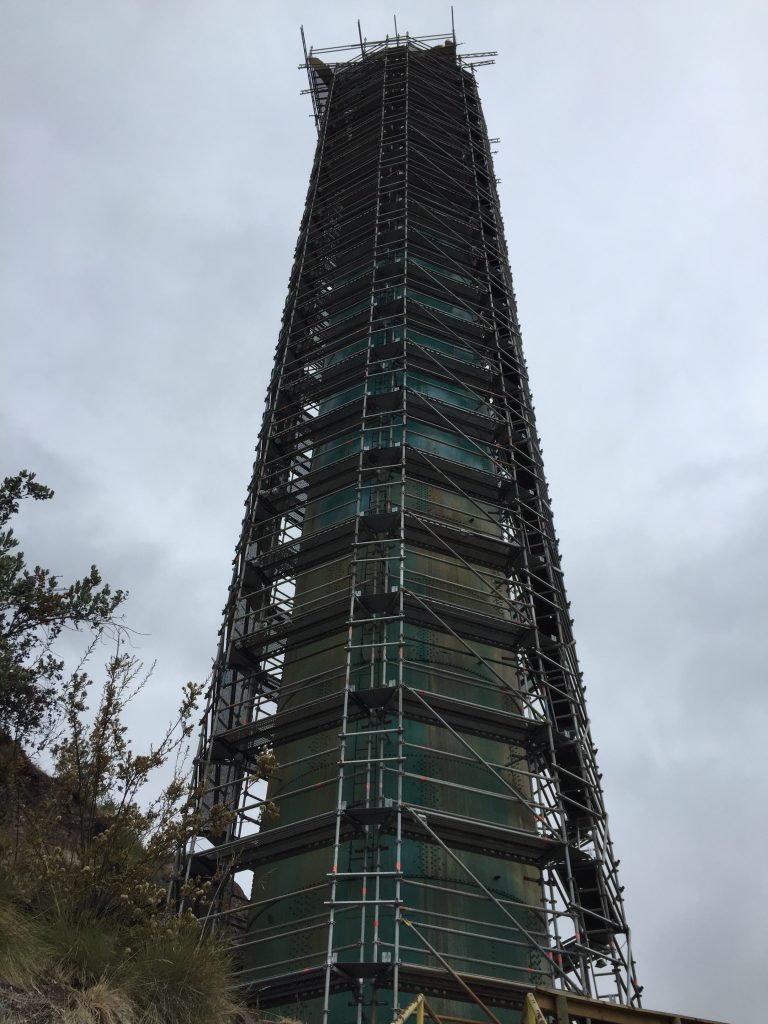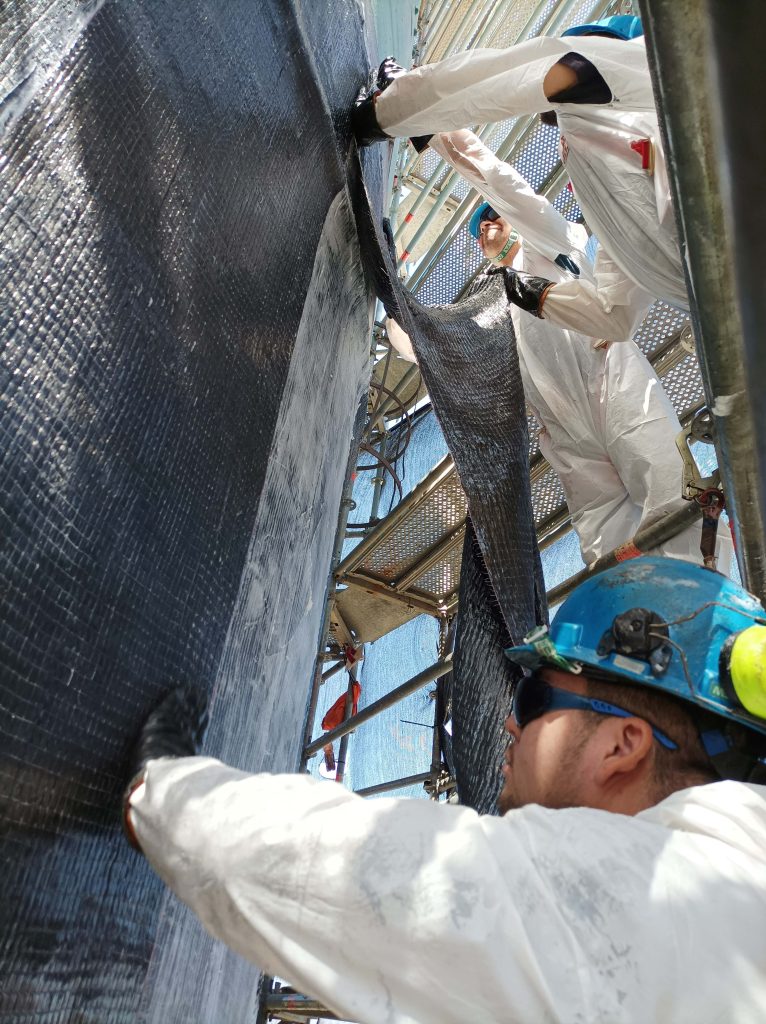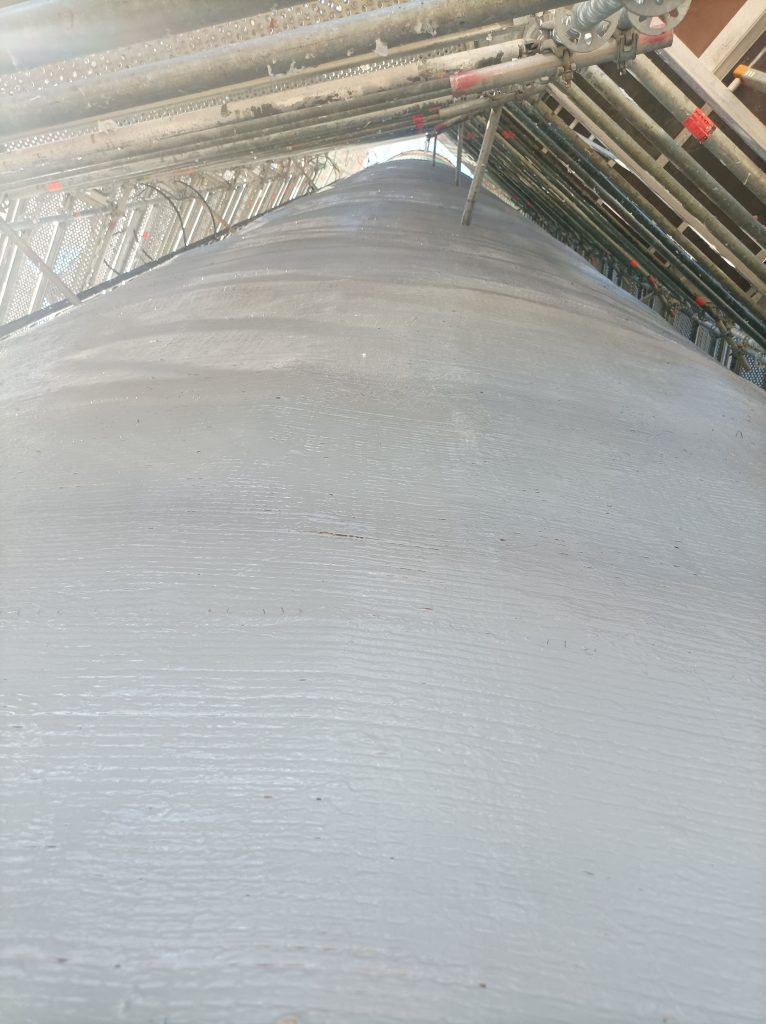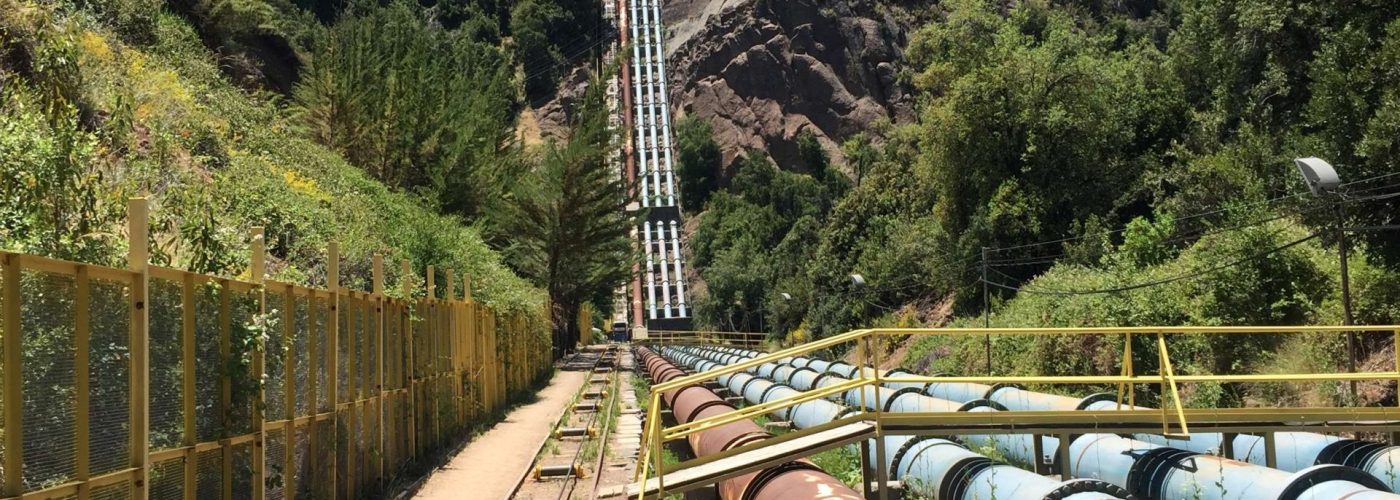Wrapping a surge shaft in the Andes mountains of South America
Accessing hard-to-reach locations is not a new challenge faced by installers of Fyfe’s Tyfo structural strengthening solutions, but one project, located deep in the Andes mountains of South America, proved to beat all other projects when it came to testing access and logistics.

A 100-year-old, 130-ft tall and 16-ft diameter rivetted steel surge shaft, which forms part of a hydro power facility was identified as suffering from corrosion. The owners commissioned engineers to analyze the structure which they found to be deficient under seismic demands and full of water.
To resolve the issue, it was identified that additional bending strengthening was needed in order to meet current seismic code requirements, and Fyfe was called upon to design a solution. The Tyfo System was engineered to provide the required vertical tension reinforcement which provides additional bending capacity on the vertical shaft structure. It included the application of horizontal FRP material to confine the vertical tension reinforcement for proper detailing and anchorage.
The installation team were faced with several challenging situations which required innovate solutions. Initially all materials had to be delivered to the project site via helicopter and then transported up a steep incline in a rail cart to the tower location. The remote location left the installation team with a one-hour journey just to reach the site and then they worked at height on scaffolding in wind speed of up to
25 km/hr.
Fyfe’s local certified applicator, CAFI, has a 20-year history of working with Fyfe FRP and the Tyfo Systems. The company was commissioned to carry out the rehabilitation work which included the installation of FRP to the bottom 65 ft of the shaft and a polyurethane finish coating applied on entire 130-ft tall structure.
The application process included surface preparation – sand blasting the shaft to achieve a steel surface profile of SP-10 – to a near white metal surface profile. The 15-person crew then carefully cleaned away dust and debris created from the abrasive blasting process. They then immediately primed the surfaces with neat Tyfo S epoxy to maintain the prepared surface ready for bonding.
The corrugations were treated with thickened Tyfo S epoxy to ensure gradual transitions for the fiber application were provided at a minimum slope of 4:1. Tyfo WEB and Tyfo SCH-41-2X materials were applied with the wet lay-up method. The Tyfo SCH-41-2X was designed to provide the required vertical tension capacity for the shaft to meet the seismic bending requirements. Tyfo SCH-41-2X material was then applied horizontally to confine the vertical material, and finally an exterior grade polyurethane coating was applied. And the Tyfo WEB bi-directional glass system acted as the dielectric barrier between steel and carbon fiber wrap.
Fyfe recommends that all FRP applications include a proper finish coating – this being an exterior and remote location, the most durable and robust finish coating was suggested for optimal protection and to minimize maintenance requirements. To ensure the best possible quality installation a Fyfe trained third party inspector conducted daily quality reviews including a list of employees per shift, surface temperatures during each shift, material lot numbers used each shift, defect identification and repair summary, and recorded adhesion test results.
The project itself took 12 months of planning due to the logistical challenges of transporting materials and the need to correctly protect the crew who had to work in short shifts due to the job site’s altitude. The work program had to coincide with the dry season (Spring & Summer) and avoid the rigorous weather conditions in the Chilean`s Andes Mountains during winter. The FRP scope of work including surface preparation, FRP application and finish coat application took four months.
CAFI’s Operations Manager, Gonzalo Carrasco said: “This project is a one of its kind in the region and it was the result of CAFI Ltda. and Fyfe FRP’s teamwork, who during the entire project process provided us with the necessary technical assistance and engineering support to develop a solution for the project in an optimal manner.”
Fyfe FRP’s VP of Sales, Tomas Jimenez said: “Despite the challenging location the CAFI team managed to complete the installation of our Tyfo system to the high standard we have come to expect. This was an exciting project for all involved and I’m pleased to say that the structure will remain sound and secure for years to come.”


Building, Design & Construction Magazine | The Choice of Industry Professionals
About Fyfe
Fyfe was founded in 1988 to strengthen failing bridge columns using aerospace materials. It is a pioneer in the fiber-reinforced polymer (FRP) structural strengthening industry. Today it is a world leader in designing and manufacturing Tyfo®, a system of specialized carbon and glass fabrics, which we combine with polymers to strengthen a wide range of masonry, concrete, steel, and timber structures. The Tyfo FRP system is also being used to rehabilitate potable, and non-potable piping systems. www.FyfeCo.com
About Critica Infrastructure
Critica Infrastructure is shaping the future of critical infrastructure through highly-engineered and proven composites, insertion valves, geopolymer materials, and fiber-reinforced polymers, and associated engineering support and training services.
Critica Infrastructure solutions are used to construct, maintain, strengthen, protect, and rehabilitate energy transmission and distribution lines, high-consequence industrial pipework, water pipelines, tanks, storm and sanitation systems, and civil/structural assets. Critica Infrastructure solutions are safer and more sustainable, easy to install, cost effective to deploy, and durable for decades. www.CriticaInfra.com





